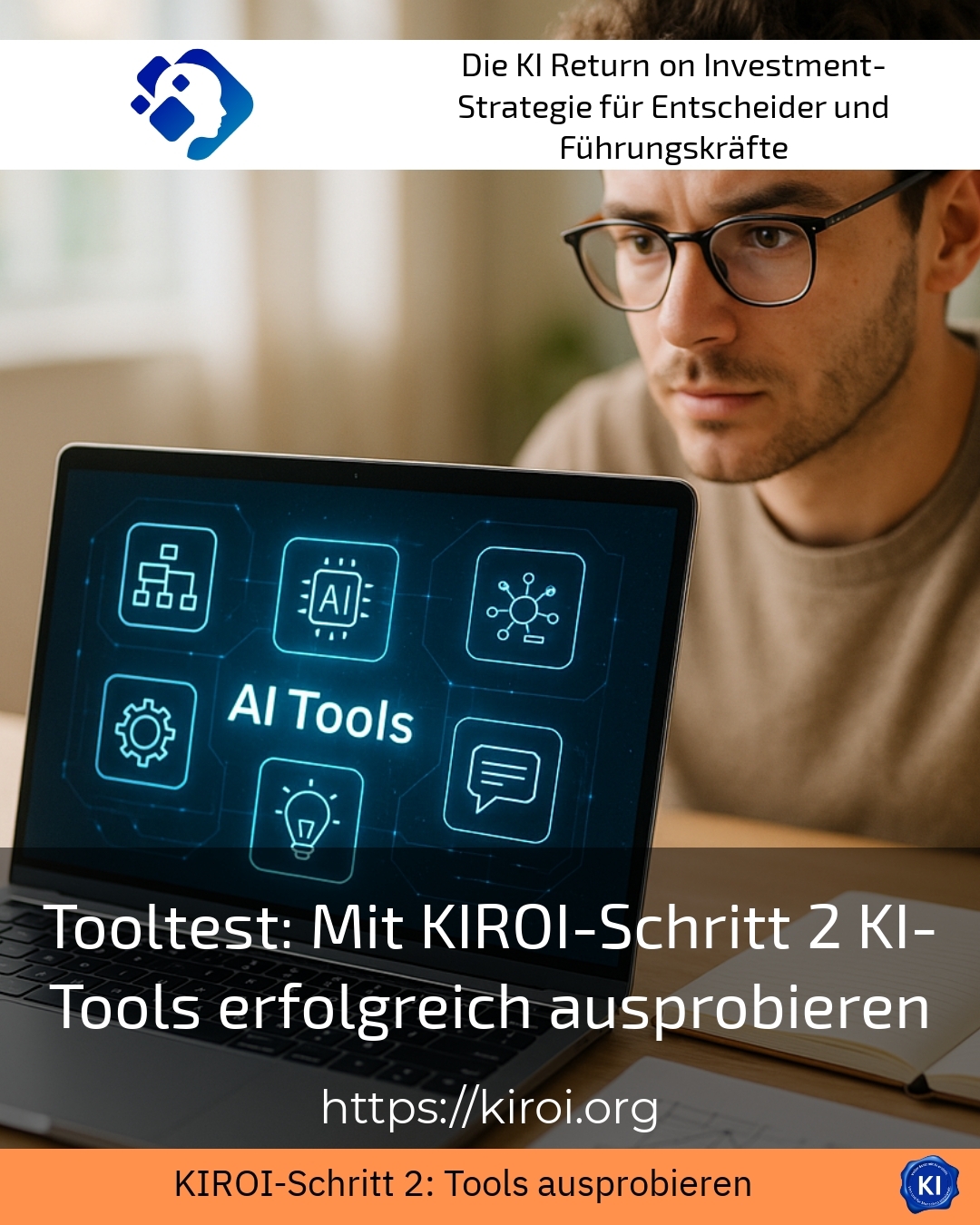In the digital transformation, the Tooltest is an important step for companies to test and evaluate new technologies in a targeted manner. As part of the KIROI methodology in particular, step 2 offers a structured approach to testing AI tools in a meaningful and results-orientated way. In this way, managers and project managers gain important insights to tailor software solutions precisely to their requirements.
Why the tool test in KIROI step 2 is essential
The Tooltest in the KIROI process follows a detailed analysis of individual company requirements. Instead of selecting tools based on a gut feeling, teams develop clear use cases that cover all important functions and features during the test phase. In the manufacturing industry, for example, it is tested how reliably visual systems recognise quality defects. In the healthcare sector, the tests focus on user-friendly and secure documentation solutions. And in financial services, AI applications for risk analysis are scrutinised for their suitability for integration.
This precise preparation avoids costly mistakes due to unbalanced functions or a lack of compatibility. After all, when dealing with AI systems in particular, only those who test the tools realistically can create a sound basis for decision-making.
How the tool test supports practical business processes
In retail, for example, the Tooltest the review of AI-driven forecasting systems for inventory management. Improved sales planning reduces storage costs and minimises stock shortages. In logistics, various software solutions for route optimisation are being evaluated through tests, resulting in a noticeable increase in delivery performance. Educational institutions try out supporting programmes that adapt curricula to individual learning needs.
These examples show: The practical reference is important for the Tooltest indispensable. Only realistic application scenarios reveal the strengths and weaknesses of the solutions.
BEST PRACTICE with one customer (name hidden due to NDA contract)
One media company used the Tooltest in KIROI step 2 to evaluate different AI-based text creation solutions. The focus was on text quality, customisability and integration into the workflow. This structured approach led to a successful implementation and a high level of acceptance within the team.
What is important when carrying out the tool test
Successful tool tests follow a clear process: first, the specific requirements are determined with the involvement of the specialist departments. Based on this, the team selects potential tools, which are then tested according to defined criteria. Not only technical functions are important here, but also user-friendliness, security and compatibility with existing systems.
For example, a manufacturer from the automotive industry tested AI-supported diagnostic tools in order to better plan maintenance processes. In the marketing sector, a service provider evaluated SEO tools to specifically analyse competitors and improve visibility. A financial services provider used automation solutions to take over routine tasks in contract management in order to free up time resources.
Tips for an effective tool test
Companies should create a realistic test environment that accurately reflects everyday working life. It makes sense to actively involve users so that their feedback flows into the evaluation. Iterative testing and documentation ensures that all findings remain transparent and weak points are recognised at an early stage. In addition, the Tooltest from functionality testing to sustainable integration into the organisation.
This often makes it possible to successfully anchor technological innovations and strengthen innovative power.
Another advantage of the structured tool test is the support it provides in prioritising criteria and making better investment decisions. The link with coaching services, for example from transruption coaching, can help clients to fully realise the potential of the tools.
BEST PRACTICE with one customer (name hidden due to NDA contract)
A technical services company carried out a Tooltest with a focus on an SEO analysis tool. The systematic support in the KIROI process helped to evaluate user-friendliness and adaptability. The insights gained sustainably improved the company's digital competitiveness.
My analysis
The Tooltest in KIROI Step 2 is a structured and proven method for evaluating AI tools and digital solutions in a practical way. It helps companies to select suitable tools that meet their individual requirements in the long term. Real application scenarios and the integration of user feedback create a reliable basis for decision-making. The variety of industry examples shows that the tool test can provide impetus for more efficient processes and better results. At the same time, it promotes the acceptance of new technologies within the company.
Companies that use this method in a targeted manner and have it accompanied by coaching favour sustainable project success and strengthen their ability to innovate.
Further links from the text above:
Testing the tool: How to succeed in step 2 of the KIROI methodology - SAULDIE
Focus on tool testing: How to succeed in step 2 of the KIROI process
Tooltest: Successfully testing AI innovations with KIROI Step 2
Tool testing for decision-makers: successfully utilising KIROI step 2
Focus on tool testing: KIROI step 2 for AI success - SAULDIE
For more information and if you have any questions, please contact Contact us or read more blog posts on the topic Artificial intelligence here.















